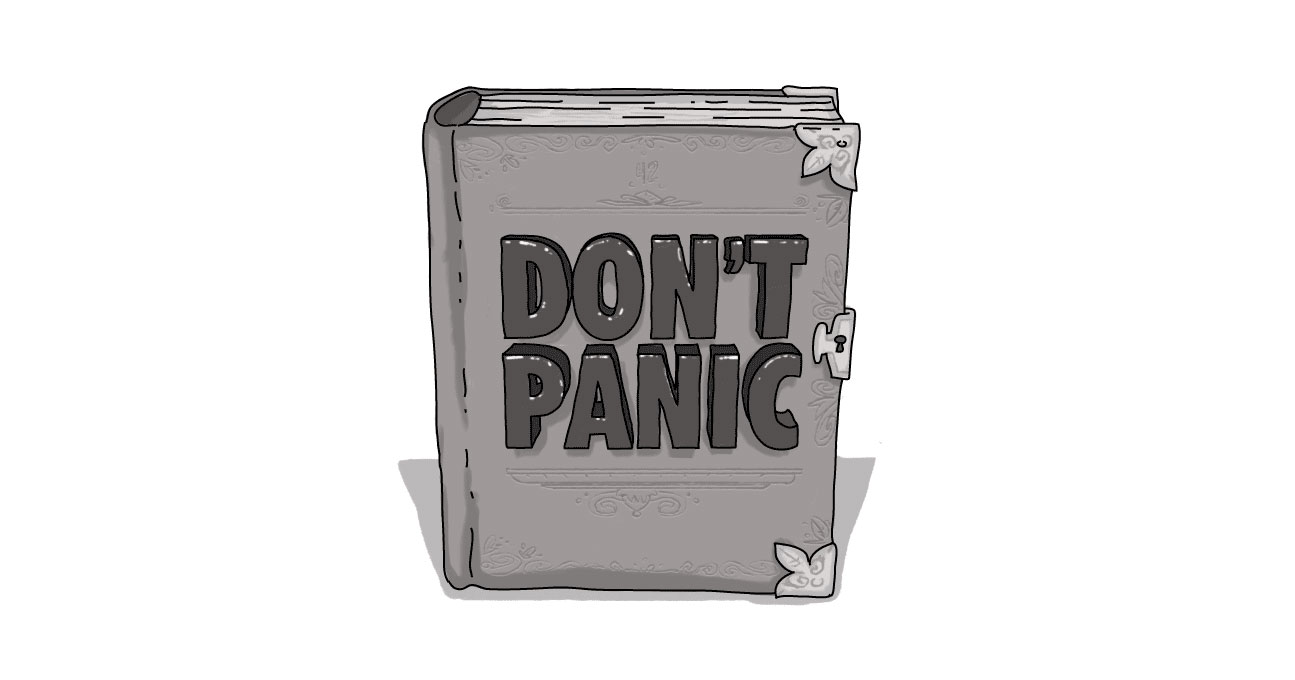Don't Panic -- Crisis Communications

In business and in politics, emergencies can flare up that require immediate response – but not all equal responses are created equally.
Yesterday’s faux pas or gaffe is today’s Internet meme or trending Twitter topic. Only a few years ago, a slip of the tongue could be confined to the next morning’s headlines. However, between the 24-hour news cycle and the rise of social networking, honest (and some not-so-honest) mistakes can become a long-term, honest-to-goodness headache!
In 1522, Juan Sebastian Elcano completed Ferdinand Magellan’s first circumnavigation of the globe (due to the little issue of Magellan dying en route) after a voyage of three years and one month; today, a stupid comment can circumnavigate the globe in a matter of seconds.
That’s why, as a business, you have to think beyond the here and now when it comes to developing plans for content. You can’t just focus on the sunshine and lollipops, expecting everything to go spectacularly right. You have to do more than manage the messages you want to share; you have to plan for the messages you don’t want to have to deliver.
Things to watch for:
Tweetjacking: To quote the poet Robert Burns, “The best-laid schemes o’ mice an’ men gang aft agley, an’lea’e us nought but grief an’ pain, for promis’d joy!” This statement first appeared in 1785 and it remains just as true to this day. Despite one’s best intentions, those best-laid plans tend to go awry – and it’s the communicator that has to deal with the grief and pain!
Recent examples include McDonald’s #McDStories campaign, which was intended as a positive way to share stories about its food, but ended up being conscripted by angry customers (and, of course, the usual band of stick-poking rabble-rousers) to share horror stories about their experiences.
Wrong Account: In 2011, someone responsible for the @RedCross Twitter account meant to post a comment about getting drunk on their personal profile. They didn’t.
Newsjacking: Most recently, American Apparel, Urban Outfitters, and HubSpot posted promotions centred around Hurricane Sandy.
And these are just the self-inflicted challenges. All businesses should have a communications plan in place to deal with actual disasters (fire at your building, death of integral staff, natural disaster).
Ideally, you establish a crisis response document that outlines multiple scenarios and establishes clear protocols for your communications/public relations team. But at the very least, you can steal my five-pronged strategy.
BE RESPONSIVE: Whether you shot yourself in the foot, or the issue was out of your control, face up to it and be ready to answer your questions. Even if you don’t have an answer, follow my communication fundamentals (guaranteed to work both for external and internal communications!): Tell them what you can; Tell them what you can’t – but make sure you explain why.
Most people will respect this strategy. Journalists aren’t ogres – they just have a job to do. If you don’t have the information, or if you need to notify family members about a tragedy first, or if it’s a legal matter that requires following a protocol, they’ll respect you for telling them – and will give you the time. And if you DO have the information, don’t hide it – it only ends up working against you.
BE RESPECTFUL: If it’s a tragedy that’s impacted the lives of others, don’t be flippant. If someone has taken offence to something you’ve posted, don’t argue the validity of their concern. Your intent does not override the offended party’s feelings. And justifications and arguments only make you look like the bad guy.
And respect goes both ways. If you’re dealing with media, respect their deadlines. But you are also able to say, “We are working diligently on this issue. We will be available at noon to answer questions.” Establish clear boundaries, but make sure you live up to your end of the deal. Even if you have nothing further to say, make sure you show up on time to say that.
BE AVAILABLE: If you’re going to try to set defined update times, live up to your commitment. And if you’re the target of an accusation or required to defend something that’s come from your brand, step up and deal with the fallout.
If it’s a physical tragedy, make sure you establish a contact centre. Even if it means booking a hotel’s conference room, there needs to be a communications’ command centre somewhere for both media, family, and employees looking to get in contact.
BE HONEST: Probably the most important thing. A lie can buy you time, but it comes at the cost of your business’ reputation. It may be easy to deny, deny, deny – but you’re trading your corporate equity and goodwill for postponing the inevitable.
If you’ve made a mistake, own up to it and make whatever reparations are required: whether that’s an apology, indemnification, or internal training. People are willing to cut you some slack if you’re sincere in your intent.
And, as mentioned before: tell them what you can; tell them what you can’t; but tell them why.
BE CONSISTENT: The best way is to have one person funneling all the information to the various interested audiences. But that only works if the person is Available. If not, make sure the team is all on the same page and that any information or interview requests are directed to the appropriate team – so make sure your staff know who that is.
It’s a good practice to develop a crisis communications document and have people go through the scenarios -- that way you can see where there are gaps in your process and where the potential danger areas lie (both on-line and off).
And remember, with any crisis communications strategy the goal is to not make things worse.
SUBSCRIBE TO OUR E-NEWSLETTER
 Subscribe
Subscribe


